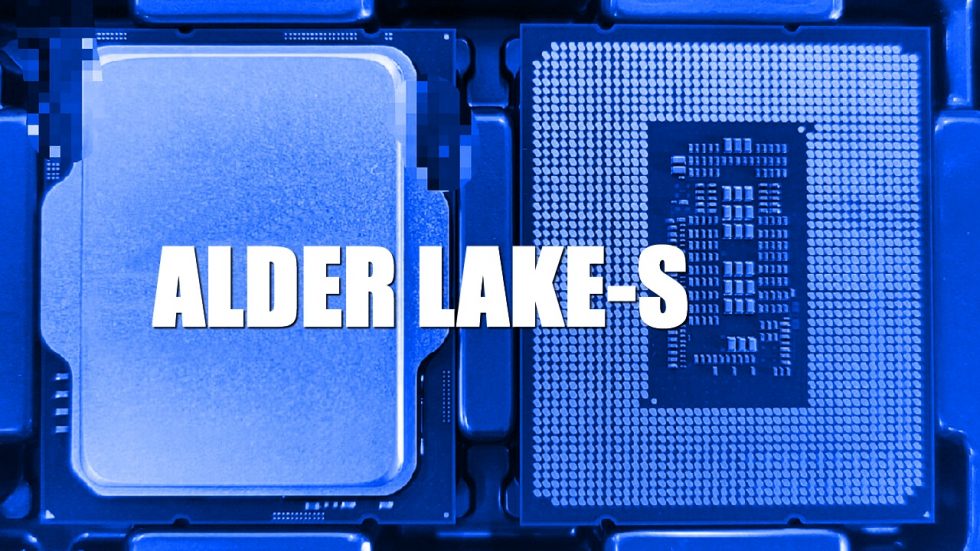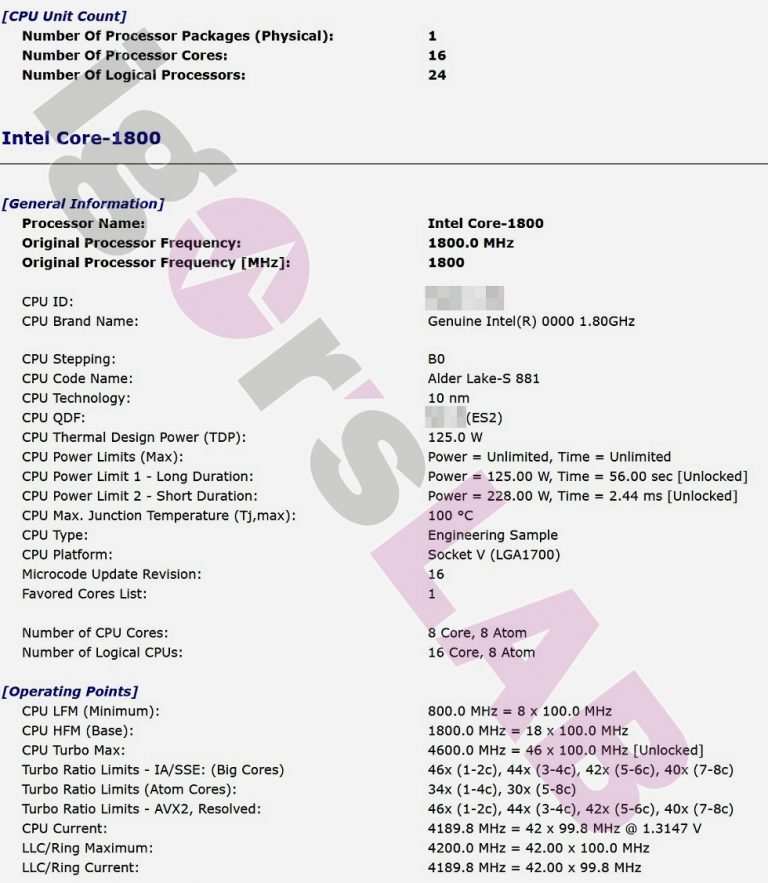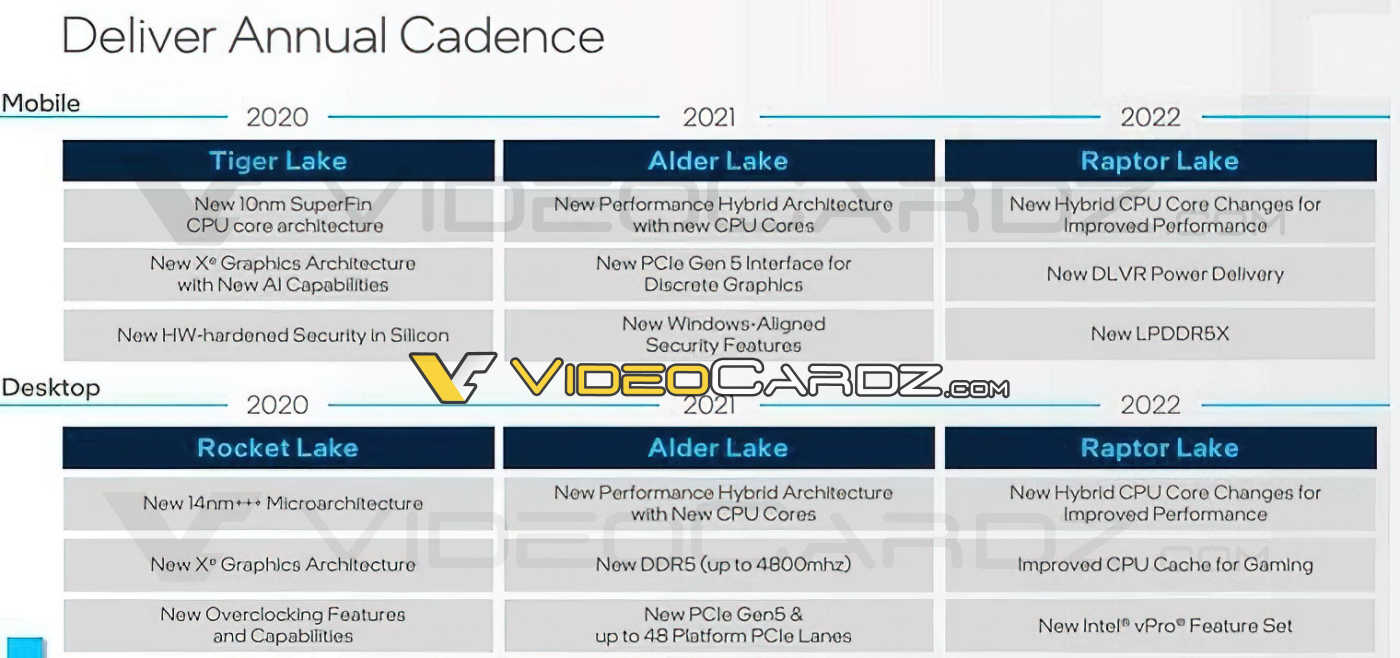
As many of Habr's readers already know, Intel has previously repeatedly mentioned the hybrid processor architecture, which is called Alder Lake. The developers talked about the new product more than once or twice, therefore, most likely, even people who are not very close to the issue of chip production have heard about it.
However, these were brief, semi-official announcements. So there is not so much information about this, but the novelty is really interesting. On the positive side, there have been several leaks on the Web over the past few weeks that clarify the big picture. Whether these leaks are accidental or intentional is not the point. The main thing is that they exist and we can learn a little more about everything. The most interesting leak is information about the processor with the preliminary design name Core-1800 SKU. Let's talk about it.
What is known about this processor?
So far, the main information that is available is the processor specifications, which ended up in the hands of the owner of the resource Igor Lab's . The same portal claims that the name Core-1800 SKU is unlikely to be final.

Photos of engineering samples of chips with Intel Alder Lake-S architecture
that got into the network The main thing to keep in mind: the Alder Lake-S architecture, on which the chips are based, provides for the presence of heterogeneous cores. The engineering sample, which came to the representatives of the German portal, turned out to be a processor with 8 high-performance Golden Cove cores and 8 energy-efficient Gracemont cores.
Powerful "large" kernels will be used to solve "heavy" tasks where high performance is required. But "small" kernels are planned to be used for relatively simple background tasks. In general, everything is quite logical.
With this solution, the company hopes to increase single-threaded performance by about 20%. But with multithreading, there is another question - here the performance increase can be twofold.
Most likely, the new processors from Intel will be represented by five families at once:
- Alder Lake-S - For desktop PCs.
- Alder Lake-P - for powerful laptops.
- Alder Lake-M - for low power devices.
- Alder Lake-L - for mobile devices.
- Alder Lake-N - for all other devices, including not very powerful laptops, chromebooks, etc.

By the way, judging by the specifications of the document, the base clock frequency of the chip is only 1.8 GHz. But with TurboBoost enabled, the processor will be able to show much better performance:
- 4.6 GHz (1-2 Cores).
- 4.4 GHz (3-4 cores).
- 4.2 GHz (5-6 cores).
- 4 GHz (8 cores).
Different processor families will have different numbers of cores of different types. So, low-power chips will have more Atom cores, processors for performance systems will have more Core cores. The chips for gaming laptops and desktop PCs have only Core, which will allow for maximum performance.

The processor is made according to a 10-nm process technology with a technical stepping B0. Chip power consumption - 125 W for PL1. For PL2, this is already 228 watts. Temperature limit - 100 º.
More about architecture
As for the Alder Lake architecture, it is similar to the previously presented big.LITTLE from ARM, at least conceptually.
This is not the first time Intel is using hybrid technology; it has previously done so for Lakefield energy-efficient chips used in mobile devices. True, these were low-power processors, but still.
New processors with this architecture are going to be released with the Enhanced SuperFin process technology, previously the company released chips using the 14-nm process technology. Modern 11th generation Core processors are manufactured using this process technology.
Alder Lake brings compatibility with next generation DDR5-4800 RAM and new PCIe Gen5 interface. As far as can be judged, the connector will also be new - LGA 1700. In short, and the list, Alder Lake supports work with:
- PCI Express 4.0.
- PCI Express 5.0.
- DDR4 standard RAM.
- DDR5 standard RAM.
Only new generation motherboards will be compatible with the new architecture.
When to expect new processors?
Despite the fact that there is already information about them, albeit semi-official, the announcement is scheduled for the end of the third - beginning of the fourth quarter of 2021. That is, the processors themselves will appear on sale even later. The company itself does not name the official date of the appearance of these chips.
In general, the 12th generation of processors is the next stage of evolution for Intel chips, it is very different from the previous generations of architecture and capabilities. It will be possible to judge how successful this decision is only after the first tests. So we are waiting for these processors, motherboards for them and try them out in action.